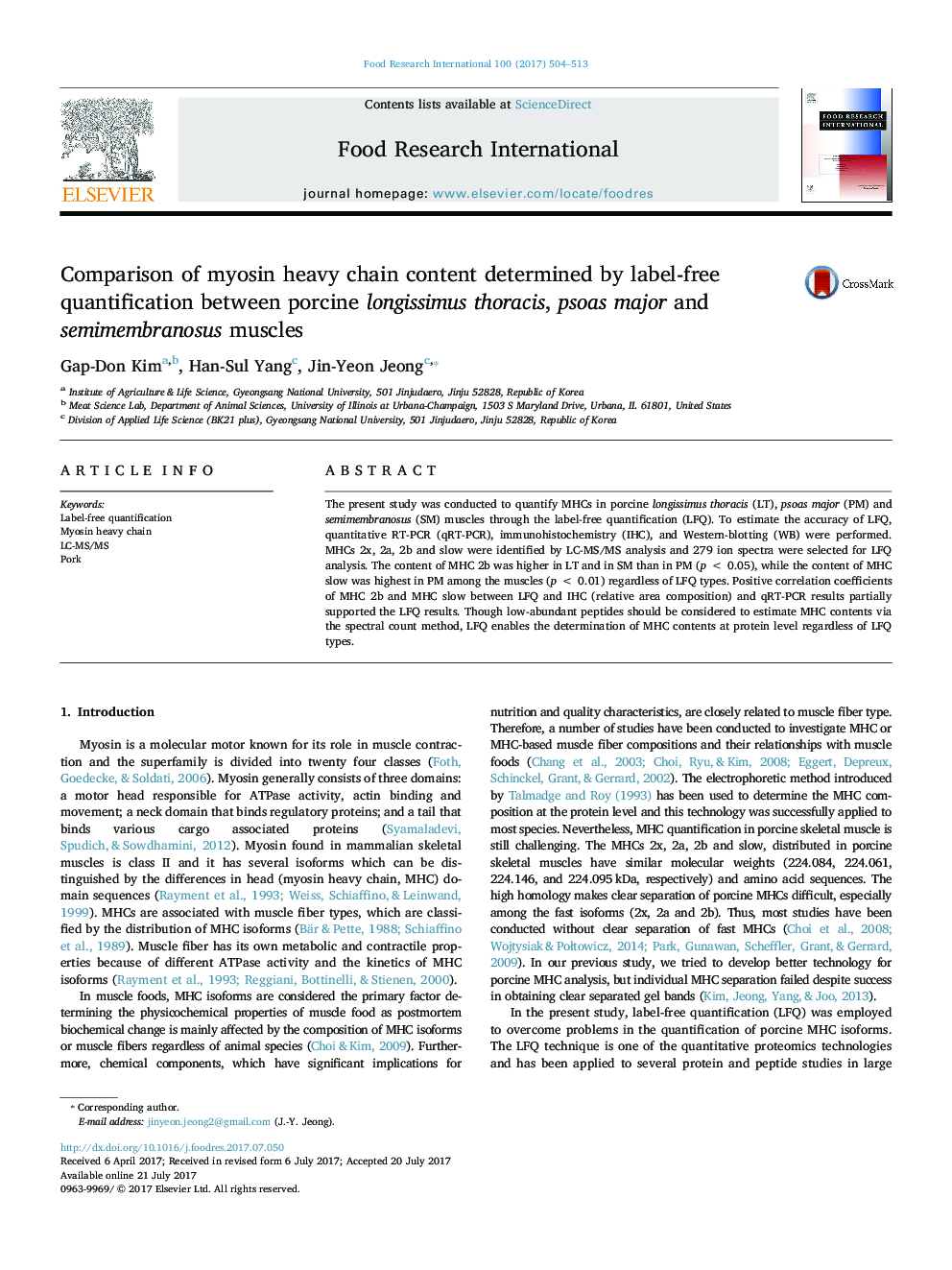| Article ID | Journal | Published Year | Pages | File Type |
|---|---|---|---|---|
| 5768001 | Food Research International | 2017 | 10 Pages |
â¢We quantify the MHC isoforms in porcine skeletal muscles by LC-MS/MS and LFQ.â¢Unique peptides could be used for both identification and quantification of MHCs.â¢Clearly different MHC contents were observed between porcine skeletal muscles.â¢Spectral intensity is more reliable than spectral count because of a few unique peptides.
The present study was conducted to quantify MHCs in porcine longissimus thoracis (LT), psoas major (PM) and semimembranosus (SM) muscles through the label-free quantification (LFQ). To estimate the accuracy of LFQ, quantitative RT-PCR (qRT-PCR), immunohistochemistry (IHC), and Western-blotting (WB) were performed. MHCs 2x, 2a, 2b and slow were identified by LC-MS/MS analysis and 279 ion spectra were selected for LFQ analysis. The content of MHC 2b was higher in LT and in SM than in PM (p < 0.05), while the content of MHC slow was highest in PM among the muscles (p < 0.01) regardless of LFQ types. Positive correlation coefficients of MHC 2b and MHC slow between LFQ and IHC (relative area composition) and qRT-PCR results partially supported the LFQ results. Though low-abundant peptides should be considered to estimate MHC contents via the spectral count method, LFQ enables the determination of MHC contents at protein level regardless of LFQ types.
Graphical abstractDownload high-res image (123KB)Download full-size image
